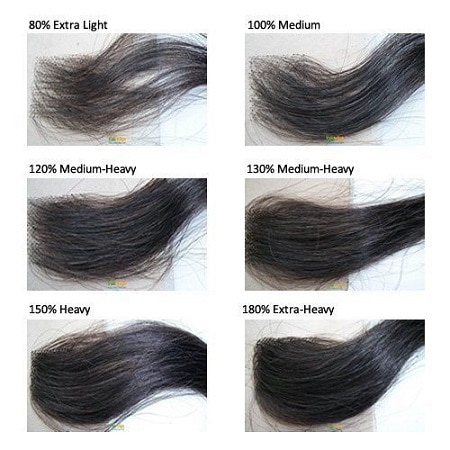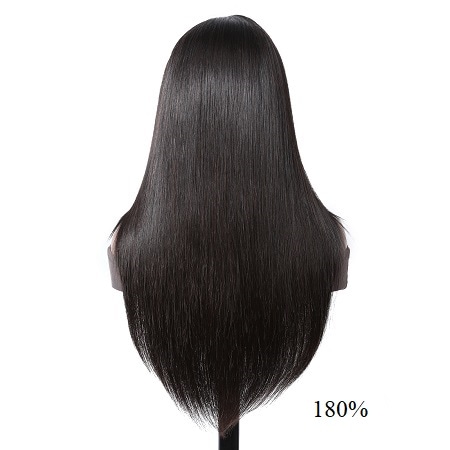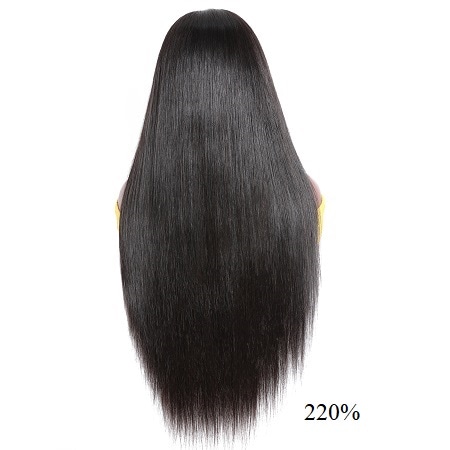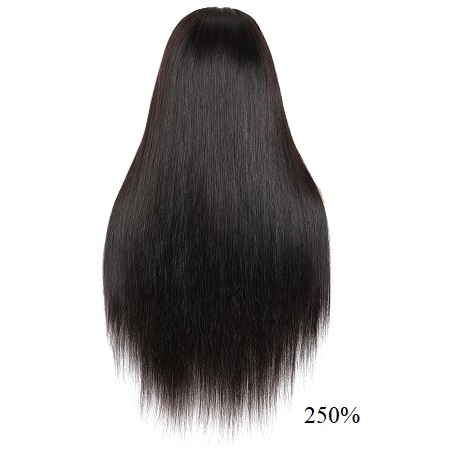
180 vs. 220 vs. 250 Density Wigs, Which is Right for You?
In choosing the perfect wig, density can be vital in setting the naturalness and fullness of the wig. Of the various density options, 180, 220, and 250-density wigs are often the most sought after by those who want fuller, more luxurious hair. But how do these two densities differ specifically, and which is better for you? Together, we will examine the distinctions so that you can make an informed choice.
What is Wig Density?

Source: Pinterest
Before we delve into the variance between 180, 220, and 250 densities, let's first understand what wig density entails.
Wig density means the amount of hair added to the wig cap, stated as a percentage. When the wig is worn, this percentage shows how full or thin it looks. Wig densities typically range from 100% to 250%, with higher percentages denoting thicker and more complete wigs. The density selection has a big impact on how the wig feels, looks, and styles.
What Does A 180-Density Wig Mean?

Source: unice.com
Lightweight and comfortable, 180% density wigs are perfect for anyone looking for a fuller look but not too much volume. With about 180 hairs per square inch, these wigs have a medium-high density for everyday wear.
Is 180 Density Good For A Wig?
Yes, a 180-density wig is ideal for everyday wear, providing ample fullness for a noticeable difference without appearing too heavy or artificial.
What is 220 Density Wig?

Source: unice.com
A 220-density wig is a wig with a hair density of 220%, which means that the cap contains 220 hairs per square inch, giving it a luxurious, voluminous look.
Is 220 Density a Good Choice for a Wig?
If you're going for a dramatic and full look, the 220-density wig is your best bet. It's the perfect density for special occasions or for those who prefer a glamorous, voluminous hairstyle.
What Does 250 Density Wig Mean?

Source: unice.com
250% density wigs are the thickest and fullest option on the market. With 250 hairs per square inch, these wigs have unmatched density and thickness for an extremely voluminous and luxurious look.
Is 250 Density Good for a Wig?
Although 250-density wigs offer incredible volume and fullness, it's not for everyone. 250 density is ideally suited for those who want the most voluminous, luxurious hair possible. Perfect for dramatic styles, it's often used for fashion shows, photo shoots, or for people who like their wigs to look really thick.
180 vs. 250 Density Wig, What are the Differences?
The distinctions between 180%, 220%, and 250% density wigs primarily pertain to their volume, styling flexibility, and more. Here are their variances:
| Density | 180 density wig | 220 density wig |
| Volume | Medium volume, natural thickness | High volume, fuller look |
| Weight | Lightweight, comfortable for daily wear | Moderate weight, may feel heavier with prolonged wear |
| Look | Natural, suitable for casual and professional looks | Thicker appearance, great for glamorous styles |
| Styling Options | Easy to style, versatile for updos and curls | Holds styles well, ideal for voluminous curls and waves |
220 vs. 250 Density Wig, What are the Differences?
| Density | 220 density wig | 250 density wig |
| Volume | High volume, fuller look | Maximum volume, extremely thick |
| Weight | Moderate weight, may feel heavier with prolonged wear | Heavy, may require secure application |
| Look | Thicker appearance, great for glamorous styles | Very thick, dramatic and luxurious |
| Styling Options | Holds styles well, ideal for voluminous curls and waves | Best for big hairstyles, less versatile for daily styles |
How to Pick the Proper Wig Density for You?
It is vital to have the right wig density to get a natural look and comfortable feel. The following guide will help you decide on the density that best suits your needs:
Natural Hair Thickness: If your natural hair is fine, a lower-density wig, such as a 150 or 180-density wig may be more suitable for you, giving you a more natural look. Suppose your hair is naturally thick, a higher-density wig, such as 220 or 250 density, may be more in line with your ideal look.
Ideal Style: Consider the hairstyle you want to acquire. With smooth, straight hairstyles, a lower-density wig may work best. Higher-density wigs are more appropriate for large curls, waves, or voluminous hairstyles.
Comfort: Higher-density wigs are often heavier, so take into consideration how comfortable they will be to wear for long periods. If comfort is a primary concern, a lower-density wig may be preferable.
Occasion: If you're going for a more everyday look, a 150 or 180-density wig is a good bet—it's practical and comfortable. If you're dressing it up for special occasions or want to make a statement, higher densities like 220 or 250 can help you achieve a more dramatic look.
The Most Popular Wigs on UNice Hair
Final Thoughts
In the end, selecting the proper wig density is a matter of personal taste that should take into account your comfort zone, maintenance skills, and style preferences. Whether you opt for 180, 220, or 250-density, comprehending these options will contribute to acquiring the look and feel that fits you best.
Related Articles
Is 150 Density Good For A Wig?



